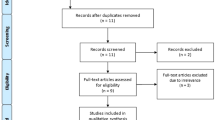Abstract
Objectives: To determine whether filters, regularly used as part of the insufflator tubing during laparoscopic surgery, trap microbial and particulate matter from CO2 tanks, thus preventing passage from one patient to another.
Methods: A total of 67 used filters were collected from 17 CO2 tanks and six insufflation machines at three local hospitals, and sterile unused filters were used as controls. The used filters were distributed equally and sequentially into three groups: Group I—viewed under a dissecting microscope for particulate matter; group II—examined by mass spectrometry for contamination with oils and other impurities; group III—incubated on sheep blood agar plates and evaluated for growth of microorganisms.
Results: Negative. Used filters were indistinguishable by all parameters from controls.
Conclusions: This limited study suggests filters now used in laparoscopic surgery fail to trap microbes or particulate matter. The question remains whether tank waste is absent or these filters fail to trap waste matter.
Similar content being viewed by others
Author information
Authors and Affiliations
Additional information
Received: 8 May 1996/Accepted: 27 May 1997
Rights and permissions
About this article
Cite this article
Frankel, S., Fitzgerald, R. & Sackier, J. Utility of insufflation filters in laparoscopic surgery. Surg Endosc 12, 1137–1140 (1998). https://doi.org/10.1007/s004649900800
Published:
Issue Date:
DOI: https://doi.org/10.1007/s004649900800




